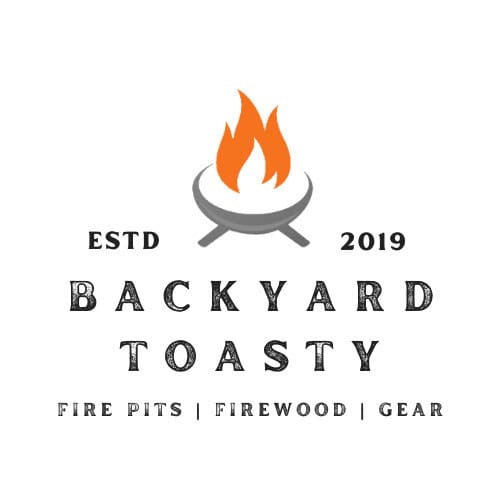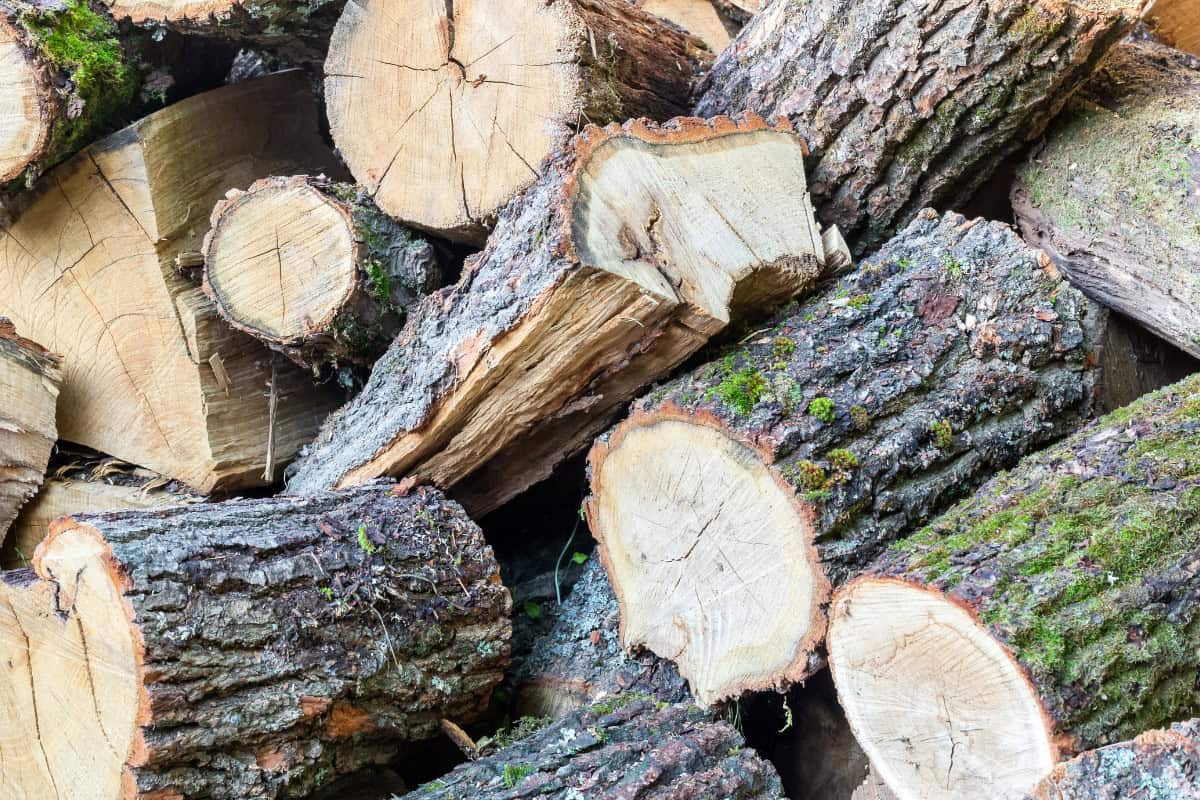
What are hardwoods? It’s a question people often ask when they’re ready to up their firewood game.
Picture this: you’re gathered around your fire pit on a crisp evening, watching flames dance while friends share stories.
The fire burns steady and warm for hours, giving you those perfect glowing coals for roasting marshmallows.
That’s the magic of choosing the right firewood—and understanding what are hardwoods is your secret weapon for amazing backyard fires.
If you’ve ever wondered why some wood burns all night while other logs seem to disappear in minutes, you’re about to get answers.
Let’s explore what are hardwoods and why these premium burning woods will transform your fire pit experience.
- What are Hardwoods? A Complete Answer
- 🌳 What Are Hardwoods?
- What are Hardwoods Best For? Top Fire Pit Species
- How to Identify Quality Hardwoods (Shopping Guide)
- Seasoning: The Secret to Great Burns
- What are Hardwoods vs Softwoods: When to Use Each
- What are Hardwoods Like Regionally? Buying Tips
- 🔥 Safety and Storage Essentials
- 🔧 What are Hardwoods? Troubleshooting Common Problems
- FAQs: What Are Hardwoods?
- Wrap-up: What Are Hardwoods?
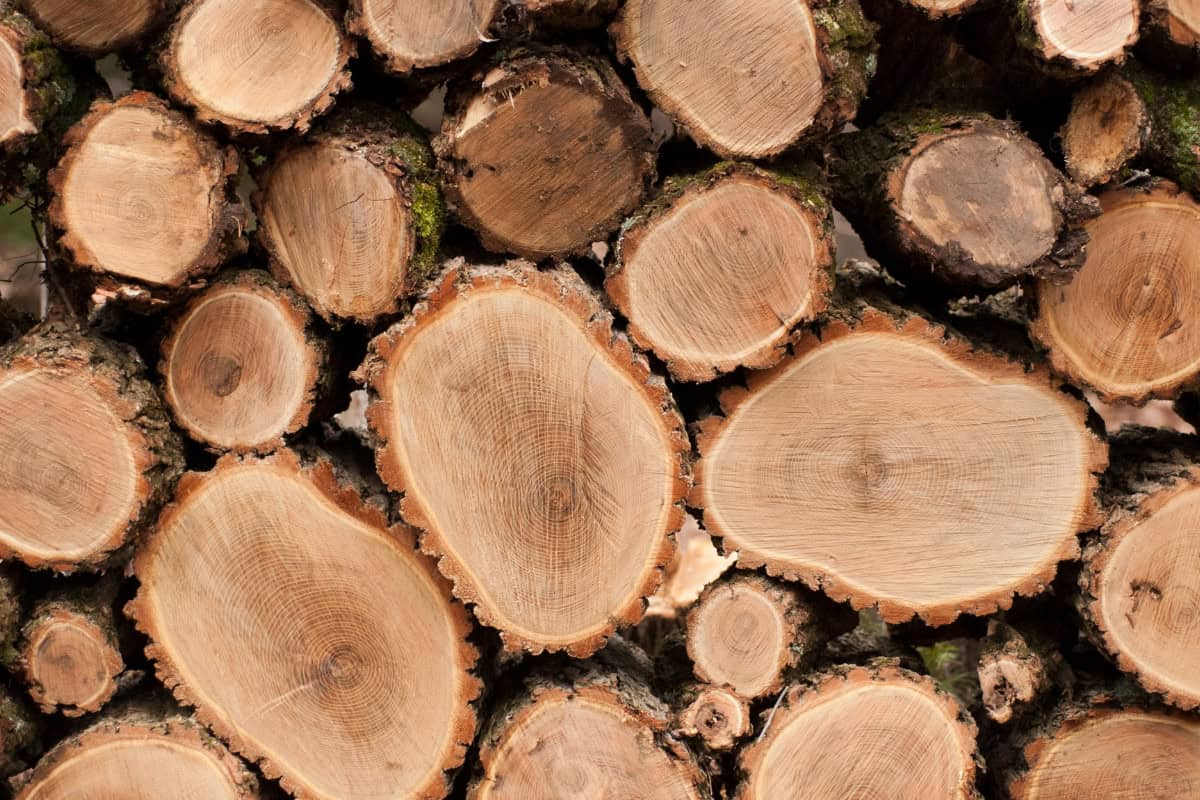
What are Hardwoods? A Complete Answer
Here’s the easiest way to understand what hardwoods are: they come from trees that lose their leaves every fall—like oak, maple, and cherry trees.
Softwoods come from evergreen trees that keep their needles year-round, like pine and fir.
So, if you are looking for a little more, check out this “scientific” answer to the question.
🌳 What Are Hardwoods?
Scientific Definition & Key Characteristics
🔬 Scientific Classification
- Botanical group: Angiosperms (flowering plants)
- Leaf type: Broad, flat leaves that typically shed annually
- Wood structure: Complex vessels and pores for water transport
- Reproduction: Seeds develop inside protective fruits or nuts
- Growth pattern: Generally slower growth than softwoods
The term “hardwood” refers to the tree’s botanical classification, not the actual hardness of the wood. Some hardwoods like balsa are softer than many softwoods like pine.
Moving on…😉
The real difference? Hardwoods are nature’s slow-burn champions. They’re denser, heavier, and packed tighter than softwoods.
When you hold a piece of seasoned oak versus a chunk of pine, you’ll immediately feel the weight difference.
Why understanding what are hardwoods matters for your fire pit:
- Hardwoods burn 2-3 times longer than softwoods
- They produce more heat per log
- You get those coveted glowing coals that last for hours
- Less smoke means more enjoyment, fewer watery eyes
Softwoods have their place too:
- Great for starting fires (they catch quickly)
- Perfect kindling material
- Usually cheaper and easier to find
Think of softwood as your fire starter and hardwoods as your marathon runners.
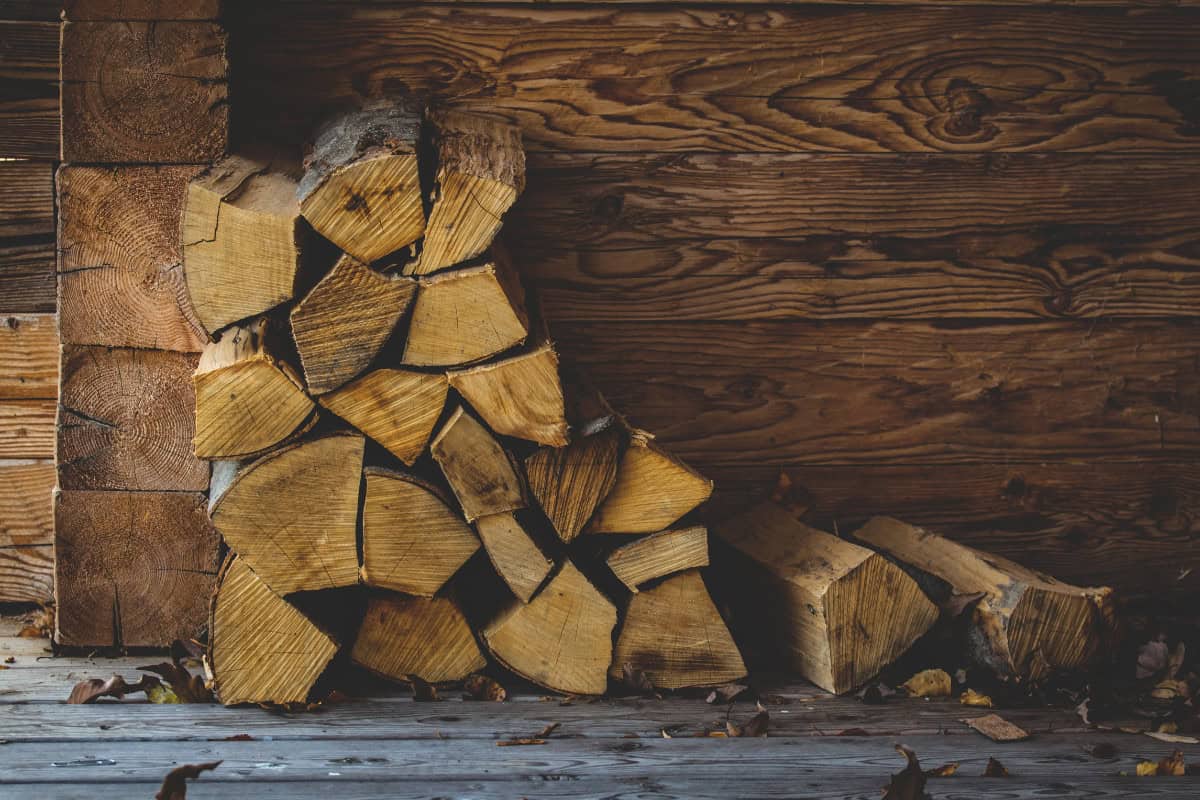
What are Hardwoods Best For? Top Fire Pit Species
Not all hardwood varieties are created equal.
Here are the champion performers that’ll make your neighbors jealous of your fires:
Oak: The Heavyweight Champion
Why it’s amazing: Burns for 3-4 hours, produces incredible heat, and creates long-lasting coals perfect for cooking.
Burn time: All evening
Best for: Long gatherings, cold nights, cooking over coals
Common Oak Types (in the U.S.):
- Black Oak: Dense, slow-burning firewood with moderate heat output and a smoky aroma. Best for outdoor fires due to its higher smoke production.
- Bur Oak: Long-lasting firewood with high heat output and minimal smoke. Ideal for indoor fireplaces and wood stoves.
- Chestnut Oak: Produces steady heat, low smoke, and a pleasant aroma. Excellent for indoor heating and cooking.
- Post Oak: Burns hot and clean with minimal ash. A favorite for smoking meats and efficient heating.
- Red Oak: Burns hot with a steady flame but produces more smoke. Best when well-seasoned for efficient heating and reduced creosote buildup.
- White Oak: Premium firewood with high heat output and long burn time. Perfect for both heating and cooking.
Maple: The Crowd Pleaser
Why it’s amazing: Burns clean with minimal smoke and splits easily. Sweet, pleasant aroma.
Burn time: 2-3 hours
Best for: Family gatherings, when you want steady heat without fuss
Common Maple Types (in the U.S.):
- Red Maple: Moderate heat output with a quick burn. Ideal for kindling or shorter fires.
- Silver Maple: Light, fast-burning firewood with lower heat output. Best for quick, easy-to-start fires.
- Sugar Maple: Dense, long-burning wood with high heat output and minimal smoke. Excellent for heating and cooking
Ash: The Quick Starter
Why it’s amazing: Lights easily (even when not perfectly seasoned), burns clean, and produces good heat.
Burn time: 2-3 hours
Best for: When you want a fire without much planning ahead
Common Ash Types:
- Black Ash: Moderate heat output, easy to split, and burns steadily. Great for general-purpose firewood.
- White Ash: High heat output, low smoke, and easy to season. Ideal for indoor heating and fireplaces.
Pro tip: Ash is one of the few hardwood types you can burn with higher moisture content, but seasoned is still better.
Hickory: The Flavor Master
Why it’s amazing: Highest heat output, amazing aroma, perfect for cooking.
Burn time: 3-4 hours
Best for: Winter nights, BBQ sessions, when you need maximum heat
Common Hickory Types (in the U.S.):
- Mockernut Hickory: Dense, long-burning wood with high heat output and a pleasant aroma. Excellent for heating and smoking meats.
- Pignut Hickory: Produces intense heat and a steady burn. Great for heating and adding rich flavor to smoked foods.
- Shagbark Hickory: Premium firewood with exceptional heat output and slow burn time. Perfect for heating, smoking, and grilling.
Pro tip: Can be tough to split, so buy it pre-split if possible.
For more details on these and other types of hardwood firewood, check out our firewood BTU chart and our collection of firewood profiles (both hardwoods and softwoods) that provide detailed specs, pros and cons, etc. for over 40 types of firewood commonly used in the U.S.
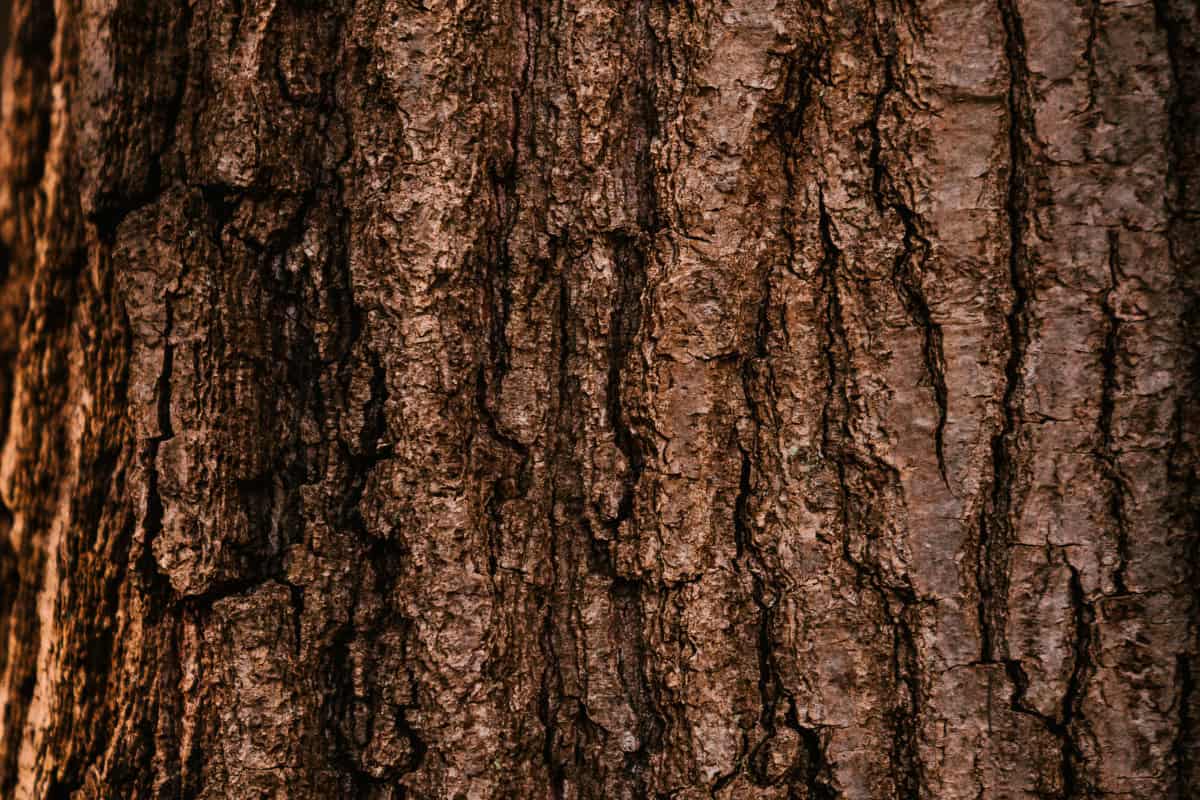
How to Identify Quality Hardwoods (Shopping Guide)
When you’re shopping for firewood, knowing what are hardwoods supposed to look and feel like makes all the difference.
Here’s your guide to identifying top-quality burning wood:
Visual Clues:
- Heavy for its size – if it feels light, it’s probably softwood or not well-seasoned
- Tight bark – avoid logs with loose, flaky bark falling off everywhere
- Clean cuts – freshly cut ends should look solid, not spongy or punky
- Gray/weathered appearance – seasoned wood often has a weathered look
The Sound Test:
Knock two pieces together. Well-seasoned hardwoods make a sharp “crack” sound. Green or soft wood makes a dull “thud.”
The Smell Test:
Fresh hardwood varieties smell clean and woody. Avoid anything that smells sour, moldy, or musty.
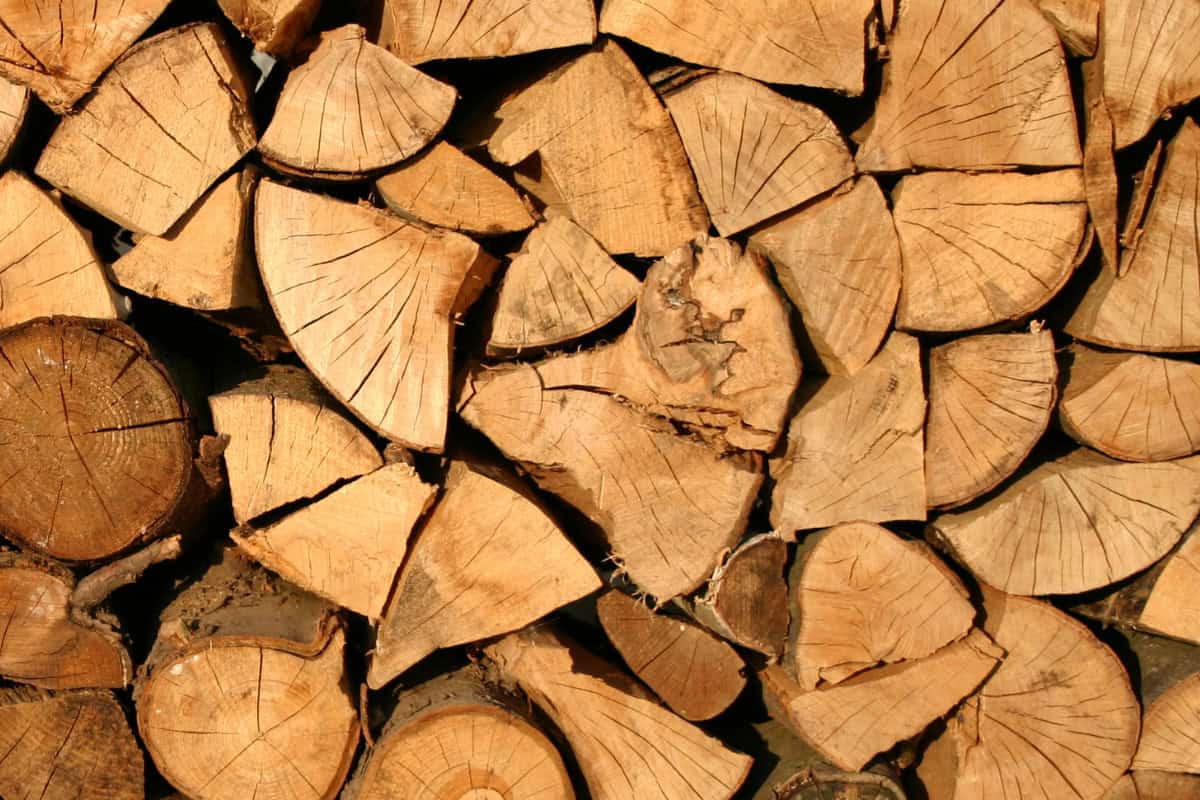
cracks coming from the center of the split means well-seasoned firewood
Seasoning: The Secret to Great Burns
Here’s the truth: even the best hardwood species are terrible if they’re not properly seasoned (dried). Fresh-cut wood can be 50% water—you’re basically trying to burn a wet sponge.
Seasoning Timeline for Different Wood Types:
- Oak and Hickory: 12-18 months
- Maple and Ash: 6-12 months
- Cherry and Apple: 6-8 months
Signs Your Wood is Ready:
- Ends have cracks radiating from the center
- Bark falls off easily
- Feels lighter than when freshly cut
- Makes that sharp “crack” sound when pieces hit together
Storage Tips:
- Stack off the ground (use pallets or 2x4s)
- Cover the top but leave sides open for airflow
- Face cut ends toward prevailing wind
- Don’t wrap in tarps—wood needs to breathe
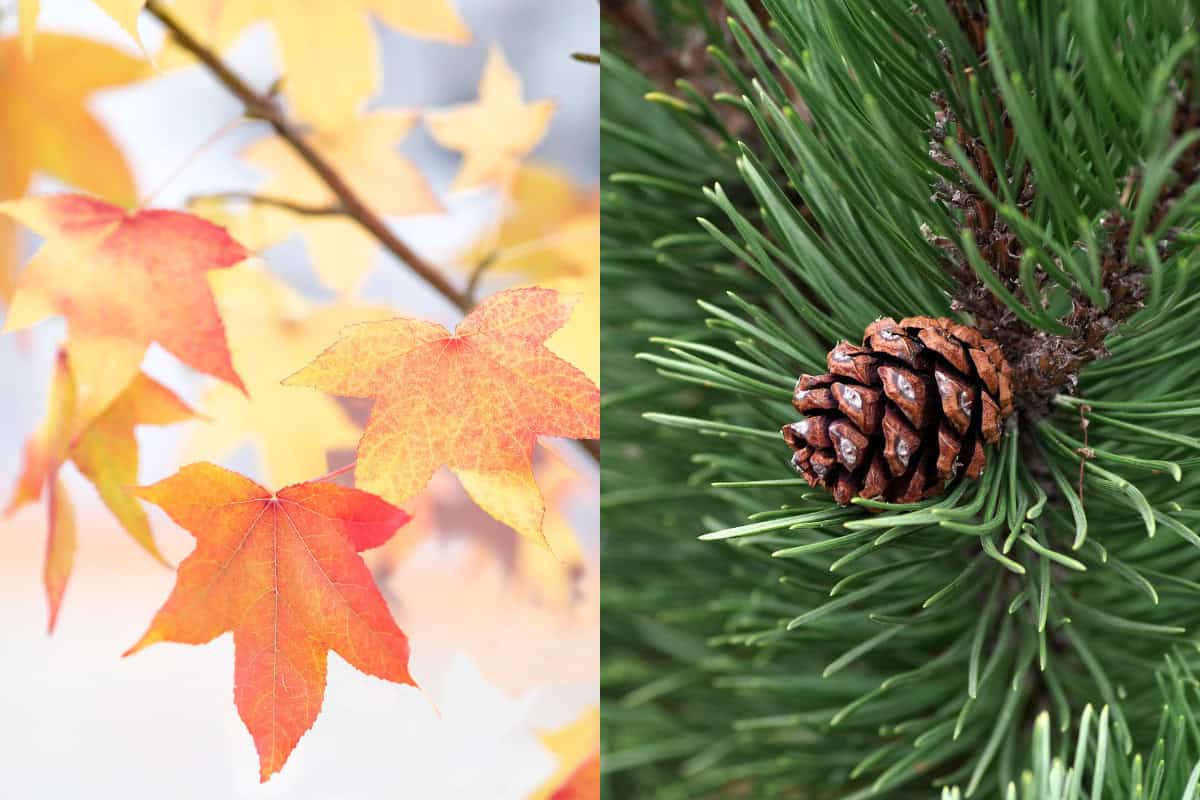
What are Hardwoods vs Softwoods: When to Use Each
Use Hardwoods When:
- You want a fire that lasts more than an hour
- It’s cold and you need serious heat
- You’re cooking over the fire
- You have guests and want consistent warmth
Use Softwood When:
- Starting your fire (excellent kindling)
- You only want a quick 30-minute fire
- You’re practicing fire-building skills
- Budget is tight (usually cheaper)
Pro move: Start with softwood kindling, add a few softwood logs to get established heat, then switch to hardwoods for the long haul.
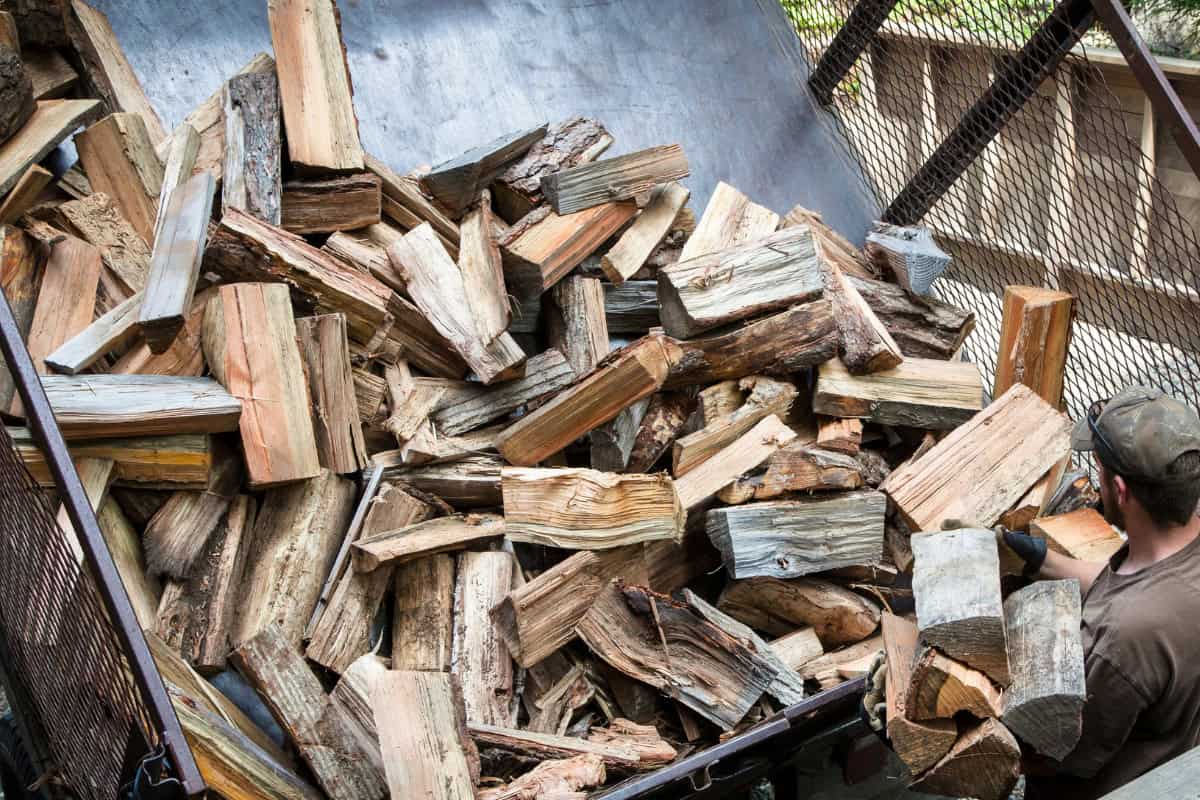
What are Hardwoods Like Regionally? Buying Tips
What’s Usually Available:
- West: Oak, Madrone, fruit woods
Seasonal Shopping Strategy:
- Spring: Best time to buy next year’s wood (cheapest prices)
- Summer: Order for fall delivery, prices start rising
- Fall: Premium prices, limited selection
- Winter: Most expensive, often poor quality available
Money-saving tip: Buy a full cord in spring when prices are lowest, even if you only burn a face cord per year.
Now that we’ve covered all things hardwood firewood, check out the table below which lists all hardwood firewood types mentioned in the article.
It’ll come in handy when making the right fire pit firewood choice when you are ready to buy or chop your own.
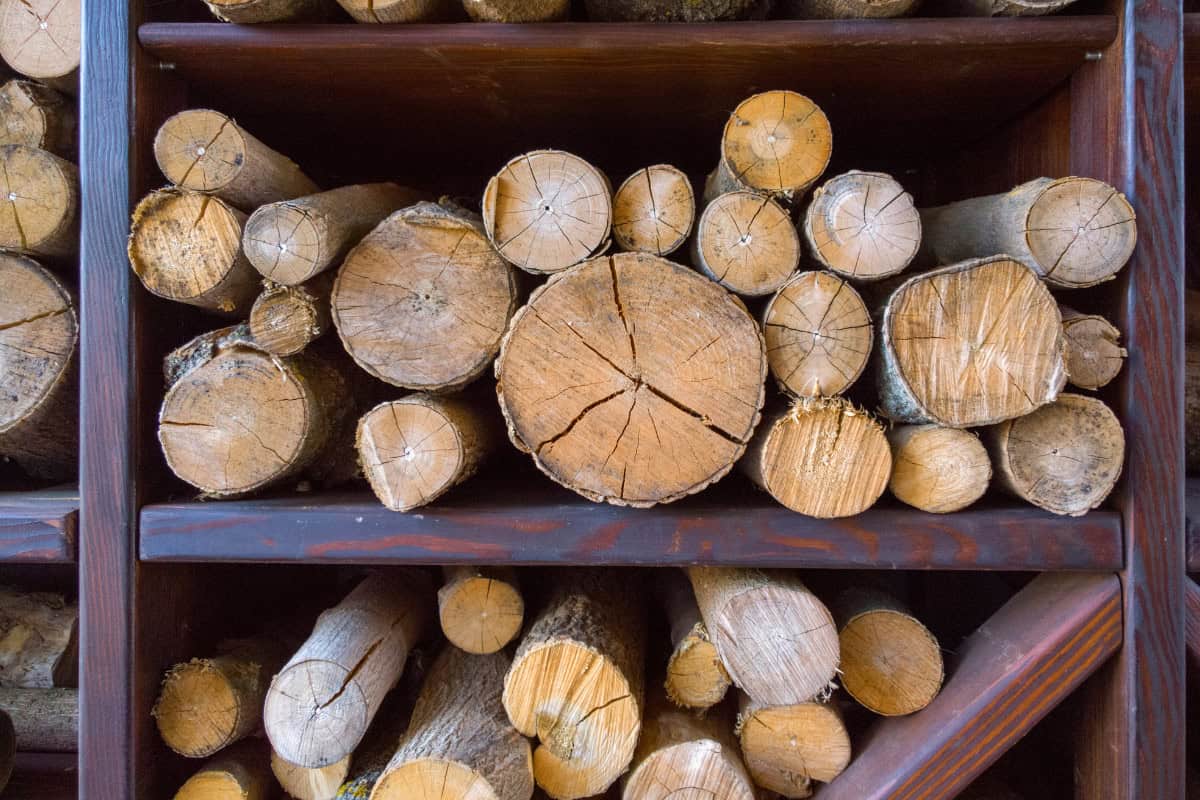
🔥 Safety and Storage Essentials
Essential guidelines to keep your firewood dry, safe, and ready for perfect fires ✨
⚠️ The Golden Rules
- 🚫 Never burn treated lumber – it releases toxic chemicals
- 🎨 No painted or stained wood – stick to natural wood only
- ⚖️ Keep fires manageable – don’t overload your pit
- 💧 Have water nearby – hose or bucket for emergencies
- 🧹 Clean out ashes regularly – prevents buildup and fire hazards
📦 Smart Storage
- 🏠 Keep 2-3 days’ worth near your fire pit – covered but ventilated
- 📏 Store bulk supply 30+ feet from house – fire safety requirement
- 🔄 Rotate your stock – use oldest wood first
- 🐛 Check for pests – shake out logs before bringing near the fire
🌿 Local Expert Advice 👥
For region-specific firewood recommendations and safety guidelines, consult with your local firewood supplier or state extension office. 📍
🔍 Find Your Local Extension Office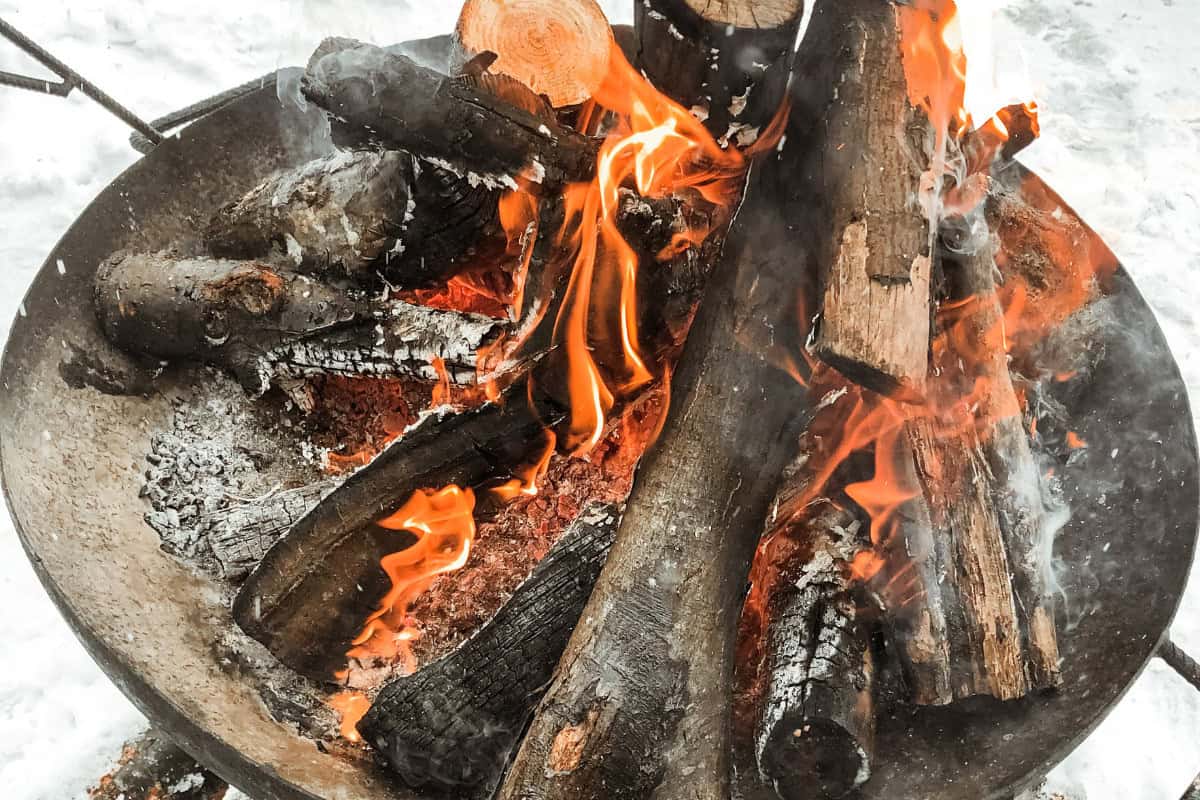
properly stacked promotes better airflow and a better, cleaner fire
🔧 What are Hardwoods? Troubleshooting Common Problems
Expert solutions to fix the most common hardwood burning issues and get your fire back on track 🔥
- Check moisture content: Tap two pieces together – they should make a sharp “crack” sound, not a dull thud
- Build a proper kindling nest: Start with paper/birch bark, add pencil-thin twigs, then thumb-thick sticks
- Create airflow channels: Leave gaps between logs for oxygen to circulate freely
- Use softwood to start: Pine or cedar catches easier, then add hardwood once flames are established
- Split logs smaller: Expose more dry interior surface area for easier ignition
Keep a “fire starting kit” ready: dry newspaper, birch bark, and a small pile of softwood kindling. Store it in a dry place near your fire pit.
- Improve ventilation: Adjust dampers, move wind blocks, or reposition logs to allow better airflow
- Use seasoned wood only: Green wood contains 40-50% moisture and will always smoke heavily
- Don’t overpack: Give logs room to breathe – cramped fires burn inefficiently
- Check your fire lay: Build a log cabin or teepee structure for optimal air circulation
- Let it heat up: Cold fires smoke more – give your fire time to reach proper burning temperature
A properly burning hardwood fire should produce almost no visible smoke once established. If you see steady smoke, something needs adjusting.
- Switch to hardwood: Oak, maple, and hickory burn 2-3 times longer than pine or fir
- Use larger logs: Bigger pieces sustain heat longer – aim for 3-6 inch diameter logs
- Add logs strategically: Place new logs on established coals, not dying flames
- Control airflow: Too much air burns wood faster – close dampers partially once fire is hot
- Bank your coals: Push coals together and add a large log to extend burn time
For all-night burns, load your fire pit with large hardwood logs about 30 minutes before bedtime, then reduce airflow to slow the burn rate.
- Choose splitting-friendly species: Ash, oak, and maple split easier than elm, cherry, or twisted grain woods
- Split when green: Fresh-cut wood splits much easier than seasoned – do the work early
- Find the natural cracks: Look for existing splits or check marks and target those weak points
- Use proper technique: Aim for the edges, not the center – work from outside in
- Consider pre-split wood: For problem species like elm, buying pre-split saves time and effort
- Use a splitting maul: Heavier than an axe, with a wedge-shaped head designed for splitting
Some woods like American elm are notoriously tough to split due to interlocking grain. Don’t fight it – buy these species pre-cut or choose alternatives.
🛠️ Still Having Issues? 🤔
When troubleshooting doesn’t solve the problem, it might be time to consult with experienced fire pit users or your local hardwood supplier for region-specific advice. 🔍
💬 Find Local Fire Pit Communities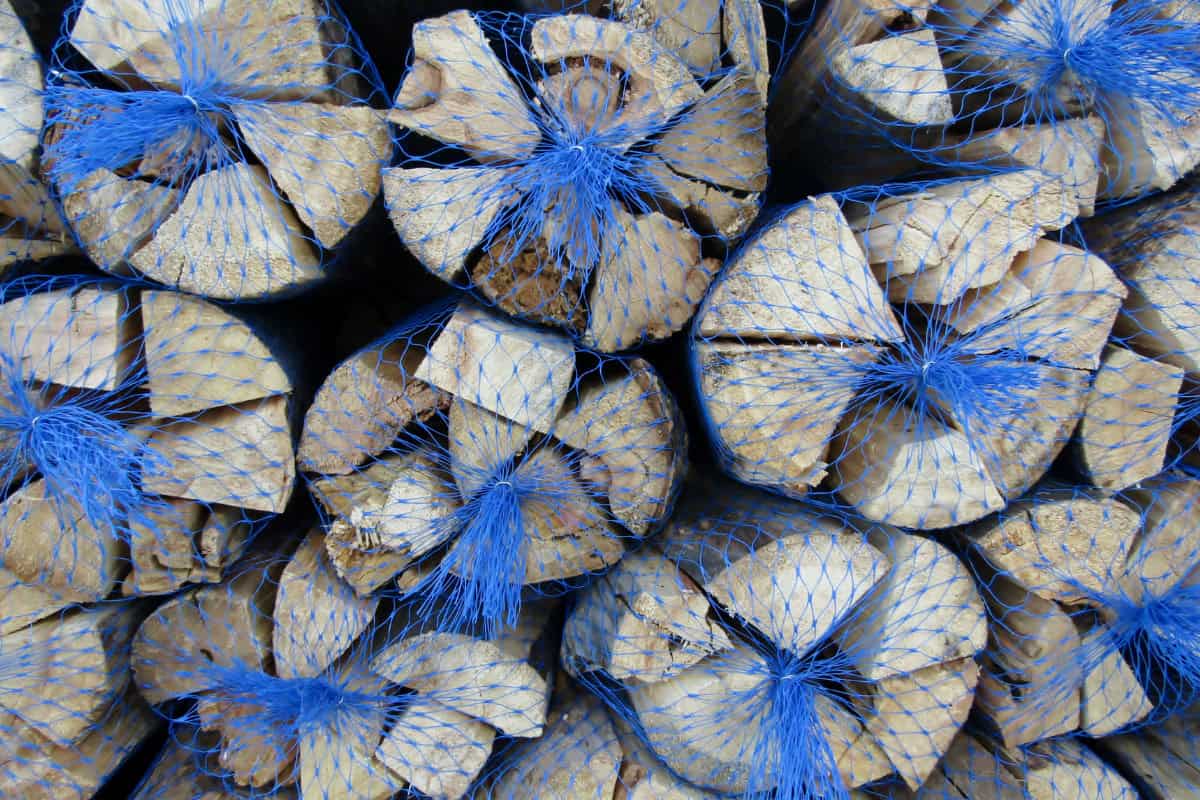
FAQs: What Are Hardwoods?
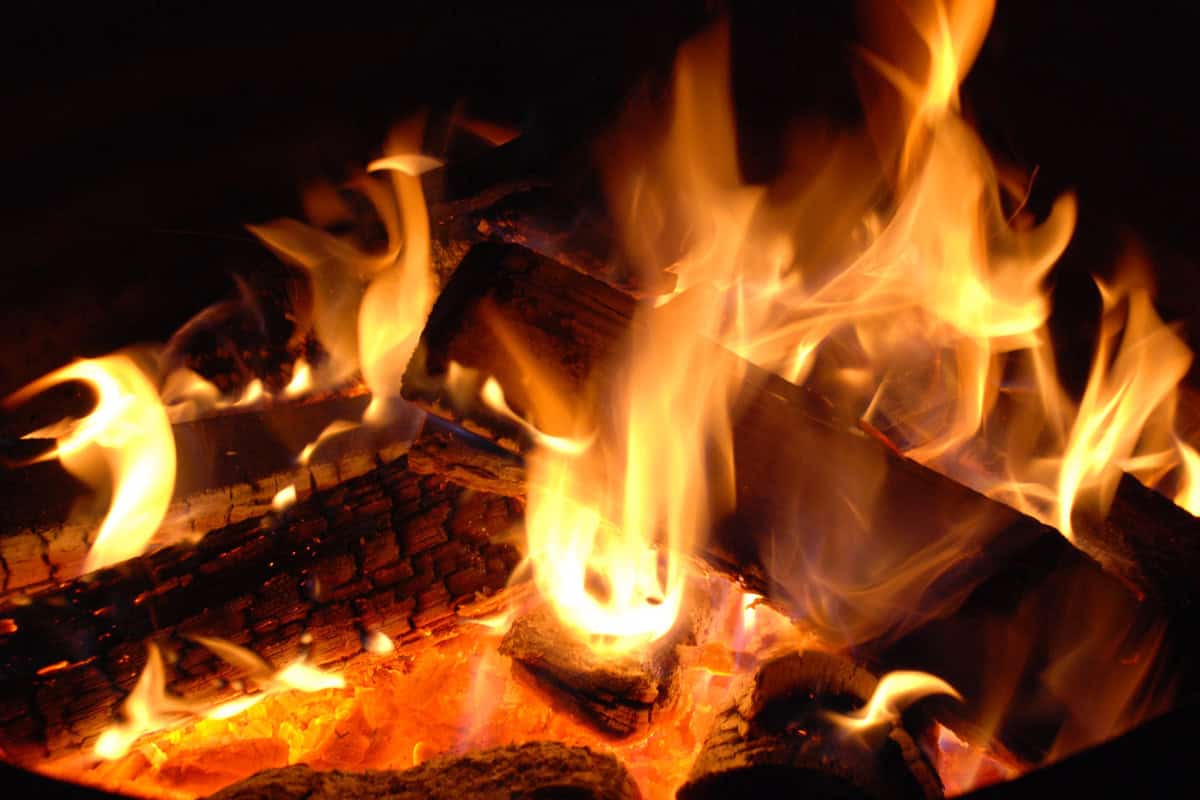
Wrap-up: What Are Hardwoods?
Now you know what hardwoods are and why they’re the secret to fire pit success: choose the right hardwood varieties for your needs, make sure they’re properly seasoned, and store them correctly.
Whether you go with dependable oak, aromatic hickory, or easy-burning ash, you’re set up for countless memorable evenings around your fire.
Ready to upgrade your fire pit game? Start with a small purchase of seasoned hardwoods from a reputable local supplier.
Once you experience the difference quality burning wood makes, you’ll never go back to grabbing random logs from the hardware store.
Here’s to warm fires, good friends, and the simple pleasure of choosing the perfect wood for your perfect evening.
